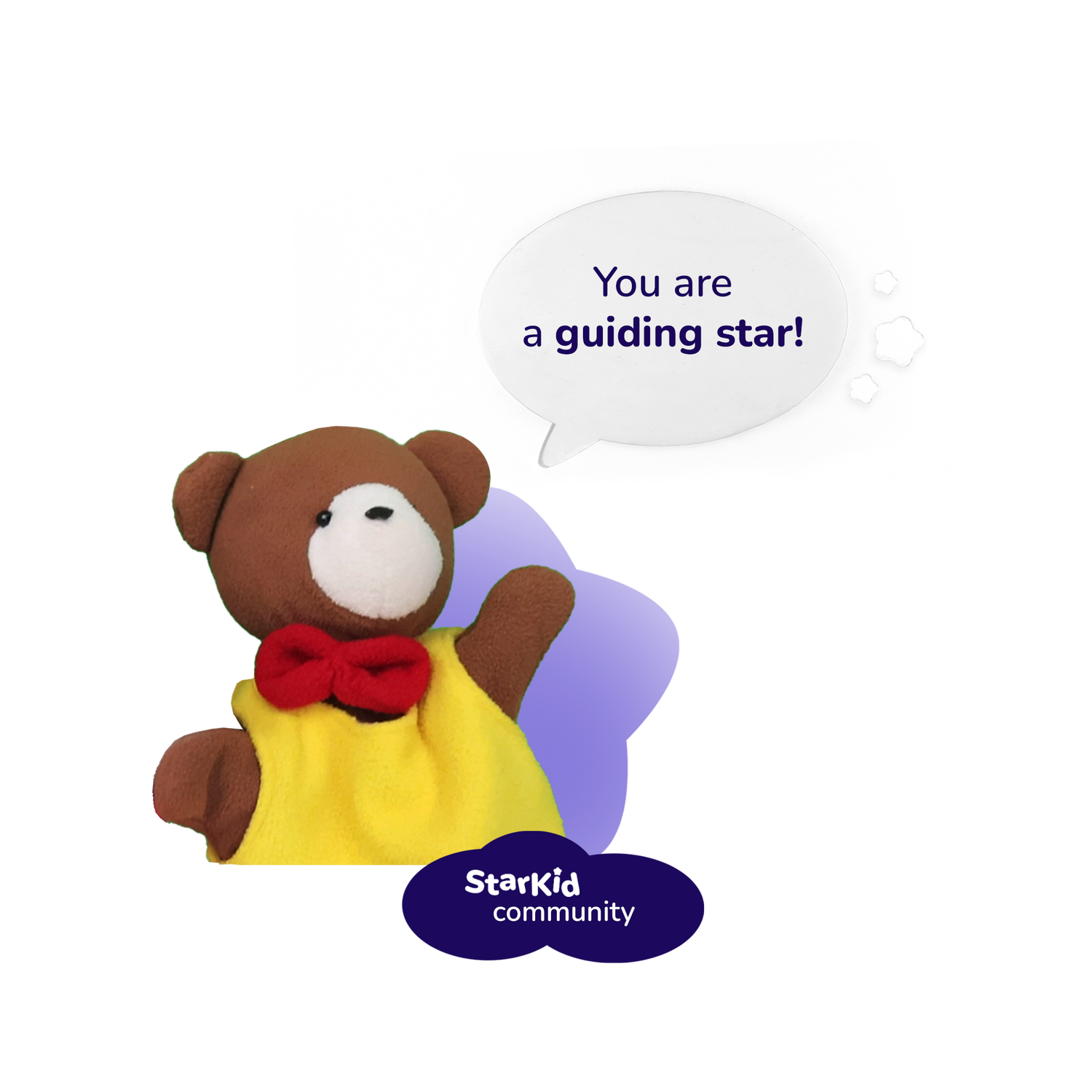🕒 Reading Time: 7–9 minutes
📚 Table of Contents
Introduction: Mindfulness as a Superpower
Mainstream Solutions
• Medication
• Behavioral Therapy
• Limitations of Mainstream Approaches
Expert Insight: Dr. Mark Bertin on Mindfulness and ADHD
Transforming Challenges into Opportunities with Mindfulness
Mindful and Out-of-the-Box Solutions
Mindfulness Practices to Try at Home
Mindfulness as a Superpower: Navigating ADHD with New Perspectives
Numerous families across the world experience Attention-Deficit/Hyperactivity Disorder (ADHD) as a widespread neurodevelopmental condition. More parents and caregivers continue to adopt mindfulness as a complementary therapy that supports conventional treatments for ADHD. The effectiveness of mindfulness in treating ADHD symptoms serves as the main topic of this paper, which helps families understand ADHD better.
Understanding ADHD
The signs of ADHD can include problems with focusing, attention, rapid response times, and sometimes hyperactivity. Many of these characteristics create serious issues in daily tasks and interpersonal relationships. Adolescents who have ADHD face additional difficulties with emotional control, which makes their life struggles more severe in educational, domestic, and social situations.
Mainstream Solutions
Cognitive behavioral therapies and medication are included in most ADHD treatment plans because they represent extensively researched conventional approaches. Licensed providers such as pediatricians, psychiatrists, and clinical psychologists recommend these treatments after conducting complete diagnostic examinations.
🔹 Medication:
Among the ADHD treatment options, stimulant drugs (Ritalin, Concerta, Adderall, and Vyvanse among others) are the most frequently prescribed by doctors. These medications enhance the brain neurotransmitters dopamine and norepinephrine, which are linked to attention, impulse control, and motivation. Research evidence validates stimulant medications as effectively minimizing ADHD symptoms including inattention, hyperactivity, and impulsivity—primarily in children, as pointed out by Zito et al., 2008.
The use of these medications swiftly enhances the ability of children to stay focused and complete their tasks, thus improving their effectiveness both in schoolwork and social settings. The side effects related to stimulant medicines include appetite reduction, sleep disturbances, heightened anxiety, and changes in mood patterns. Cooperation between clinicians and parents becomes essential for tracking patient drug dosage and evaluating results throughout the treatment duration.
The prescription of atomoxetine (Strattera) or guanfacine (Intuniv) takes place when stimulant treatments prove unacceptable or ineffective for the patient. Such medications are often prescribed to patients who demonstrate anxiety symptoms or when stimulant medication side effects become challenging to manage.
🔹 Behavioral Therapy:
The foundation of behavioral interventions serves as another important treatment framework. Behavioral therapies implement techniques for teaching children to manage stress while building self-monitoring skills and routine-establishment practices. Behavioral Parent Training (BPT) provides parents with strategies to effectively reinforce positive conduct, establish clear limits, and implement rewards and consequences properly. The CDC recommends parent training as the first-line ADHD treatment for preschool children with the condition 【CDC, 2023】.
The educational environment incorporates behavioral therapy through developed behavior modification protocols and provides teaching accommodations in addition to organized learning environments. The combination of visual schedules, token reward systems, and movement breaks prove useful in assisting students who experience difficulties with attention span and self-regulation.
🔹 Limitations of Mainstream Approaches:
The combination of medication and behavioral approaches works successfully for numerous patients but fails to address all ADHD symptoms experienced by children. Medicines improve attention but often fail to treat emotional control and self-confidence issues. The implementation of behavioral therapy requires dedicated time and ongoing caregiver participation, which can become burdensome for families facing multiple challenges.
Some children receiving ADHD therapy experience only limited success, or their medications stop working effectively, producing inconsistent results. Access to behavioral therapy also remains limited for some patients because of financial restrictions, a lack of trained practitioners, and social stigma surrounding mental health services.
More families are recognizing the unique needs of their children by turning to comprehensive healthcare methods—including neurofeedback therapy, mindfulness practices, dietary adjustments, and physical therapies that support the entire body and brain system.
Specialist Solutions
Numerous expert interventions and generalized medical care have been examined as treatment options. These include neurofeedback therapy, dietary changes, and cognitive brain training. Some families find positive results through these interventions, but scientific evidence about their effectiveness remains limited, thus making them inaccessible or unreliable for all children with ADHD.
Expert Insight: Dr. Mark Bertin on Mindfulness and ADHD
Dr. Mark Bertin, a developmental pediatrician and author of Mindful Parenting for ADHD, demonstrates the value of mindfulness within ADHD management. His approach supports educational mindfulness programs that help people of all ages develop self-regulation capabilities and lower their stress levels. Through his work, Dr. Bertin creates environments where individuals build resilience and experience improved well-being.
Transforming Challenges into Opportunities with Mindfulness
StarKid Universe promotes mindfulness as a compassionate method for managing difficulties connected to ADHD. Studies from both modern science and ancient practices demonstrate how mindfulness techniques enhance the well-being of children with ADHD and their parents.
The combination of mindfulness techniques that include yogic elements proves useful in increasing happiness levels among ADHD children and their families. The studies presented in “Mindfulness-Based Interventions for ADHD” (Psychology Today, 2022) confirm that this positive impact can be maintained over time.
Family members who adopt mindfulness practices can experience significant health benefits. Children with ADHD especially benefit from specific techniques such as guided imagery meditation, breathing exercises, and gentle yoga. These practices support focus, emotional regulation, and anxiety reduction.
The integration of mindfulness and meditation offers meaningful support alongside other ADHD treatments. These practices help reduce ADHD symptoms and improve the quality of life for affected children (Journal of Attention Disorders, 2021).
Mindful and Out-of-the-Box Solutions
Children with ADHD often thrive when using creative and engaging approaches to manage their symptoms. Art therapy, music therapy, and nature-based mindfulness activities offer alternative ways for children to develop focus, self-awareness, and emotional regulation.
These approaches tap into the child’s interests and strengths, making mindfulness more enjoyable and accessible.
Mindfulness Practices to Try at Home
A fantastic starting point for beginner practitioners involves merging easy mindfulness exercises into their daily schedule. These home-based exercises are designed to be child-friendly and supportive:
- Breathing Colors: In this exercise, your child visualizes blue as their relaxing color while inhaling, and exhaling gray as their stressful color. This visualization directs attention to the breath and encourages emotional control.
- Texture Discovery: Provide your child with objects of different textures and ask them to describe how each item feels. This anchors their awareness in the senses and helps reduce sensory overload.
- Nature Walks: Take a gentle stroll through a park or garden. Ask your child to notice the shapes of leaves, the colors of flowers, the texture of bark, or the sound of birds. Focusing on individual elements enhances sensory connection and calm.
- Mindful Eating: During snack time, invite your child to eat slowly and describe the taste, texture, and sensation of each bite. This builds present-moment awareness in a familiar, fun context.
📘 Want more support?
If you’re ready to go deeper, we’ve created a practical, step-by-step online course designed specifically for families of children with ADHD. It includes guided exercises, printable tools, and expert-led strategies to help you bring mindfulness into daily life—with less stress and more connection.
👉 Click here to explore the course
You can take it at your own pace—and we’re here to support you along the way.
Pros and Cons of Mindfulness Practices

Implementation Tips
- Begin mindfulness slowly, as large or sudden changes can create additional stress.
- Encourage short, consistent practice sessions to help build a daily habit.
- Provide a quiet, comfortable space free from distractions to support your child’s focus.
- Practice mindfulness yourself—your child learns the importance of it by watching your example.
- Adjust your approach based on your child’s unique personality, needs, and preferences.
Self-Reflection for Parents
- How do I currently respond to my child’s ADHD-related behaviors, and could mindfulness help me approach these situations differently?
- Am I modeling the behaviors I wish to see in my child, such as patience, focus, and emotional regulation?
Conclusion
The implementation of mindfulness practices within family life creates an effective and compassionate way to manage ADHD. Children with ADHD can improve their focus, emotional control, and overall well-being through techniques such as mindful breathing, sensory awareness, and gentle movement.
These practices not only support the child but also benefit parents—fostering greater harmony and connection in the family. Every ADHD journey is different, but incorporating mindfulness can transform daily challenges into opportunities for growth, healing, and stronger family bonds.
References
Autism, P. B. J. Y. a. a. F. (2021, September 14). A Grounding Yoga Practice for Kids with Autism. Yoga Journal. https://www.yogajournal.com/video/yoga-for-autism-introduction-to-yoga-for-kids-with-autism-yoga-videos/
Garcia, J. M., Baker, K., Diaz, M. R., Tucker, J., Kelchner, V. P., & Rice, D. J. (2019). Implementation Fidelity of a Mindfulness-Based Yoga Program for Children with Autism Spectrum Disorder and Their Families: a Pilot Study. Advances in Neurodevelopmental Disorders, 3(1), 54–62. https://doi.org/10.1007/s41252-018-0091-3
Hartley, M., Dorstyn, D., & Due, C. (2019b). Mindfulness for Children and Adults with Autism Spectrum Disorder and Their Caregivers: A Meta-analysis. Journal of Autism and Developmental Disorders, 49(10), 4306–4319. https://doi.org/10.1007/s10803-019-04145-3
Rodríguez-Gomez, D. A., García-Guáqueta, D. P., Charry-Sánchez, J. D., Sarquis-Buitrago, E., Blanco, M., Vélez-Van-Meerbeke, A., & Talero-Gutiérrez, C. (2021). A systematic review of common genetic variation and biological pathways in autism spectrum disorder. BMC Neuroscience, 22(1). https://doi.org/10.1186/s12868-021-00662-z
Salem-Guirgis, S., Albaum, C., Tablon, P. et al. MYmind: a Concurrent Group-Based Mindfulness Intervention for Youth with Autism and Their Parents. Mindfulness 10, 1730–1743 (2019). https://doi.org/10.1007/s12671-019-01107-9
Samosiuk, S. (2021). Autism Treatments: Beyond Applied Behavioral Analysis Therapy. https://core.ac.uk/download/427317380.pdf
Sequeira, S., & Ahmed, M. (2012). Meditation as a potential therapy for autism: a review. Autism research and treatment, 2012, 835847. https://doi.org/10.1155/2012/835847
Bertin, M. (2015). Mindful Parenting for ADHD: A Guide to Cultivating Calm, Reducing Stress, and Helping Children Thrive. New Harbinger Publications.
Van de Weijer-Bergsma, E., Formsma, A. R., de Bruin, E. I., & Bögels, S. M. (2012). The effectiveness of mindfulness training on behavioral problems and attentional functioning in adolescents with ADHD. Journal of Child and Family Studies, 21(5), 775–787. SpringerLink
Zylowska, L., Ackerman, D. L., Yang, M. H., & Shapiro, D. (2008). Mindfulness meditation training in adults and adolescents with ADHD: A feasibility study. Journal of Attention Disorders, 11(6), 737–746.
Chan, S. K. C., Zhang, D., Bögels, S. M., et al. (2023). The effects of mindfulness for youth (MYmind) versus group cognitive behavioral therapy in improving attention and reducing behavioral problems among children with attention-deficit hyperactivity disorder and their parents: A randomized controlled trial. Psychotherapy and Psychosomatics, 92(6), 379–390. SpringerLink+1Karger+1
Lo, H. H. M., Wong, S. Y. S., Wong, J. Y. H., et al. (2016). The effect of a family-based mindfulness intervention on children with attention deficit and hyperactivity symptoms and their parents: design and rationale for a randomized, controlled clinical trial. BMC Psychiatry, 16, 65. PubMed+1SpringerLink+1
Jha, A. P., Stanley, E. A., Kiyonaga, A., Wong, L., & Gelfand, L. (2010). Examining the protective effects of mindfulness training on working memory and affective experience. Emotion, 10(1), 54–64. en.wikipedia.org


